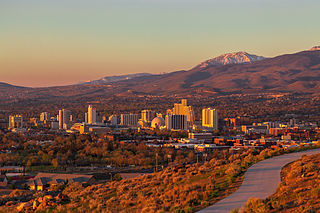
Reno is a city in the northwest section of the U.S. state of Nevada, along the Nevada-California border, about 22 miles (35 km) north from Lake Tahoe, known as "The Biggest Little City in the World". Known for its casino and tourism industry, Reno is the county seat and largest city of Washoe County and sits in the High Eastern Sierra foothills, in the Truckee River valley, on the eastern side of the Sierra Nevada. The Reno metro area occupies a valley colloquially known as the Truckee Meadows which because of large-scale investments from Greater Seattle and San Francisco Bay Area companies such as Amazon, Tesla, Panasonic, Microsoft, Apple, and Google has become a new major technology center in the United States.

A railcar is a self-propelled railway vehicle designed to transport passengers. The term "railcar" is usually used in reference to a train consisting of a single coach, with a driver's cab at one or both ends. Some railway companies, such as the Great Western, termed such vehicles "railmotors".
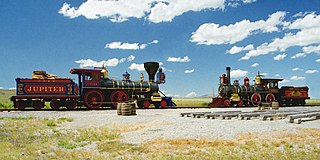
Golden Spike National Historical Park is a United States National Historical Park located at Promontory Summit, north of the Great Salt Lake in east-central Box Elder County, Utah, United States. The nearest city is Corinne, approximately 23 miles (37 km) east-southeast of the site.

The McKeen Motor Car Company of Omaha, Nebraska, was a builder of internal combustion-engined railroad motor cars (railcars), constructing 152 between 1905 and 1917. Founded by William McKeen, the Union Pacific Railroad's Superintendent of Motive Power and Machinery, the company was essentially an offshoot of the Union Pacific and the first cars were constructed by the UP before McKeen leased shop space in the UP's Omaha Shops in Omaha, Nebraska. The UP had asked him to develop a way of running small passenger trains more economically and McKeen produced a design that was ahead of its time. Unfortunately, internal combustion engine technology was not and the McKeen cars never found a truly reliable powerplant.

The Virginia and Truckee Railroad is a privately owned heritage railroad, headquartered in Virginia City, Nevada. Its private and publicly owned route is 14 miles (23 km) long. When first constructed in the 19th century, it was a commercial freight railroad which was originally built to serve the Comstock Lode mining communities of northwestern Nevada.
The Carson and Colorado Railway was a U.S. 3 ft narrow gauge railroad that ran from Mound House, Nevada, to Keeler, California below the Cerro Gordo Mines. It was incorporated on May 10, 1880 as the Carson and Colorado Railroad, and construction on the railroad began on May 31, 1880. The narrow gauge track was chosen to reduce cost. Much of the route now parallels U.S. Route 95 Alternate, U.S. Route 95, Nevada State Route 360, U.S. Route 6, and U.S. Route 395.

The Nevada Northern Railway was a railroad in the U.S. state of Nevada, built primarily to reach a major copper producing area in White Pine County, Nevada. The railway, constructed in 1905–06, extended northward about 140 miles (230 km) from Ely to connections with the Western Pacific Railroad at Shafter and Southern Pacific Railroad at Cobre. In 1967 NN reported 40 million net ton-miles of revenue freight on 162 miles (261 km) of line.

The GE 80-ton switcher is a diesel-electric locomotive model built by GE Transportation Systems. It is classified as a B-B type locomotive. It was designed for industrial and light switching duties around railheads and ports.

The GE 45-ton switcher is a 4-axle diesel locomotive built by General Electric between 1940 and 1956.
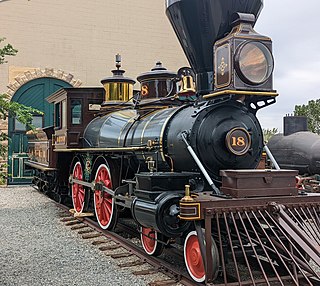
The Virginia and Truckee 18 Dayton is a historic standard gauge steam locomotive on display in Sacramento, California. It spent its working life on the Virginia and Truckee Railroad.
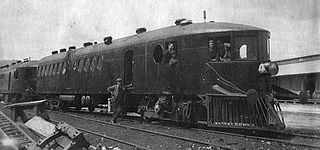
The McKeen Railmotor was a 6-cylinder self-propelled railcar or railmotor. When McKeen Company of Omaha, Nebraska, U.S.A., first unveiled the car in 1905, the McKeen was among the first engines with a distillate-fueled motor. Revisions to the McKeen car led to the modern self-propelled gasoline rail-motor vehicle, and the "contours of the porthole windows, the front-mounted gasoline engines, and other features anticipated the streamline concept."
The Frankfort and Cincinnati Model 55 Rail Car is a historic railcar on the National Register of Historic Places. The railcar currently resides at the Kentucky Railway Museum in New Haven, Nelson County, Kentucky.
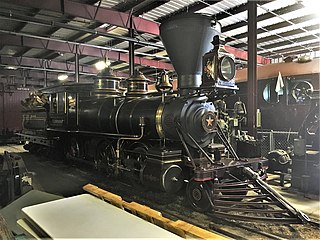
The Glenbrook is a 2-6-0, Mogul type, narrow-gauge steam railway locomotive built by Baldwin Locomotive Works in 1875 for the Carson and Tahoe Lumber and Fluming Company's 3 ft narrow-gauge railroad.
Contents:National Register of Historic Places listings in Carson City, Nevada, USA:
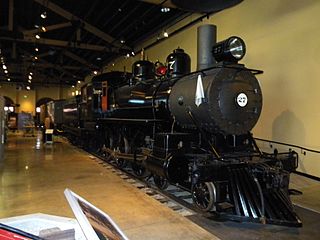
Virginia and Truckee Railroad Engine No. 27 is a historic standard gauge steam locomotive. It was on display at the Nevada State Railroad Museum in Carson City, Nevada, but was traded with The Dayton and is currently on display at the Comstock Historical Center in Virginia City. It was the last locomotive acquired new by the Virginia and Truckee Railroad, and pulled the last commercial train for the V&T on May 31, 1950, the date that freight and passenger services officially terminated for the company. The locomotive was placed on the National Register of Historic Places due to its association with the Virginia and Truckee Railroad and transportation development in Nevada.
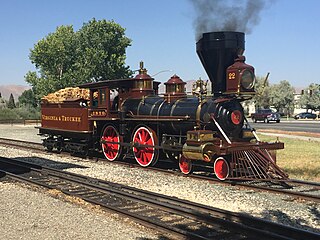
Virginia and Truckee Railroad No. 22, also known as the "Inyo", is a 4-4-0 "American" type steam locomotive that was built by the Baldwin Locomotive Works in 1875 and pulled both passenger and freight trains. The Inyo weighs 68,000 lb (31,000 kg). Its 57 in (140 cm) driving wheels deliver 11,920 lb (5,410 kg) of tractive force. In 1877 it was fitted with air brakes and in 1910 it was converted to burn oil rather than wood.
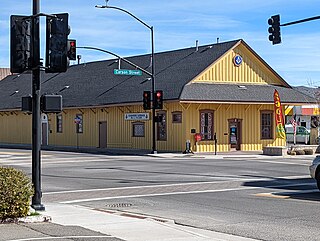
The Virginia & Truckee (V&T) Railroad Depot of Carson City, Nevada is a historic railroad station that is listed on the U.S. National Register of Historic Places (NRHP). It is significant for its association with the economically important role of the V&T railroad historically in Carson City following discovery of the Comstock Lode mine in 1859. To a lesser degree, according to its NRHP nomination, the depot building is also significant architecturally "as a well-preserved example of a wood-frame passenger depot procured from a railroad company pattern book within the V&T's former sphere of operation."
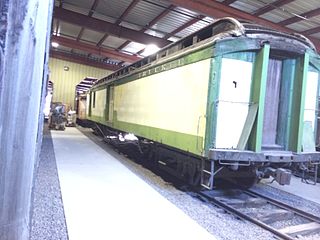
The Second Railroad Car No. 21, at the Nevada State Railroad Museum, located at 2180 S. Carson St. in Carson City, Nevada is a historic railroad car of the Virginia & Truckee line that was built in 1907. It was built by the American Car & Foundry. It was listed on the National Register of Historic Places in 1978.

The Carson and Tahoe Lumber and Fluming Company (C&TL&F) was formed to move lumber from trees growing along the shore of Lake Tahoe to the silver mines of the Comstock Lode. Between 1872 and 1898 C&TL&F transferred 750 million board foot of lumber logged from 80,000 acres (32,000 ha) of virgin timberland.

Virginia and Truckee Railroad No. 12, named Genoa, is a type 4-4-0 American standard gauge steam locomotive built by the Baldwin Locomotive Works in January 1873 for the Virginia and Truckee Railroad.


















